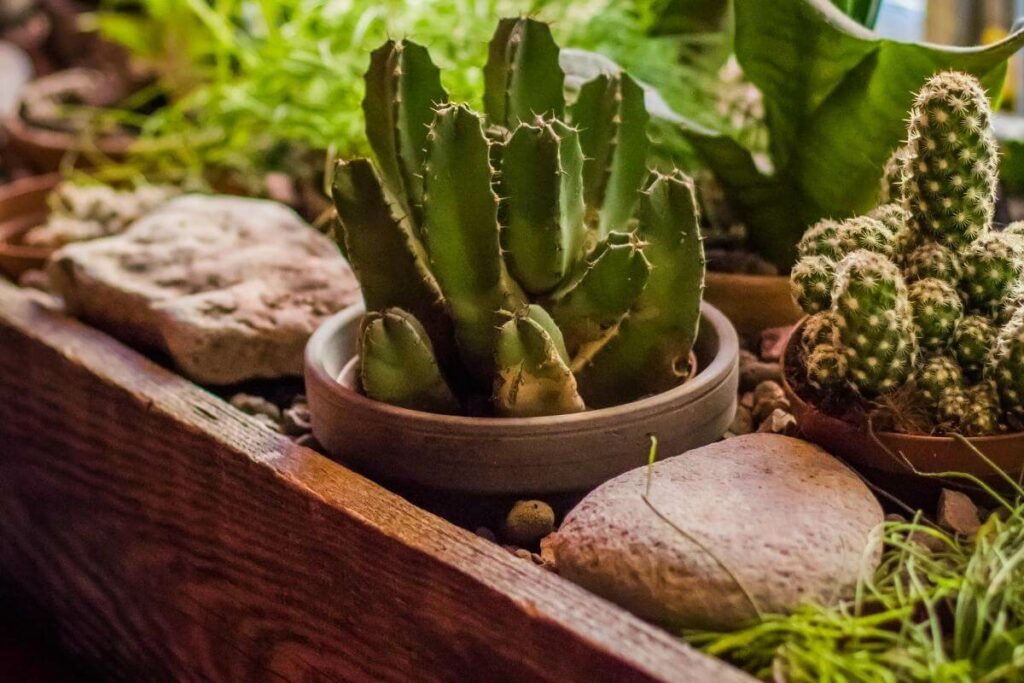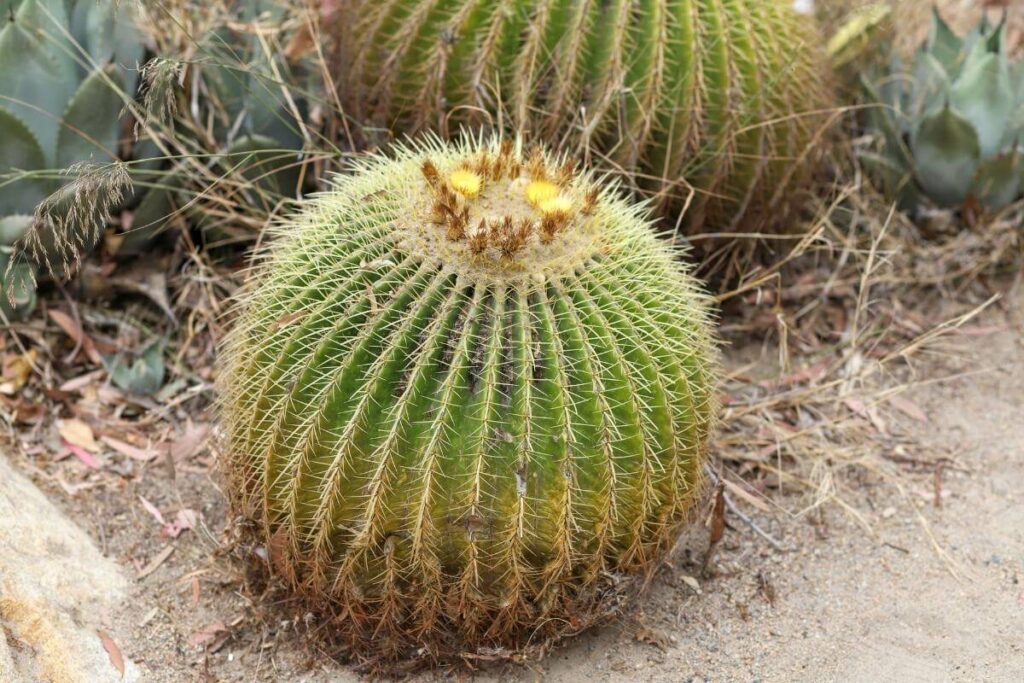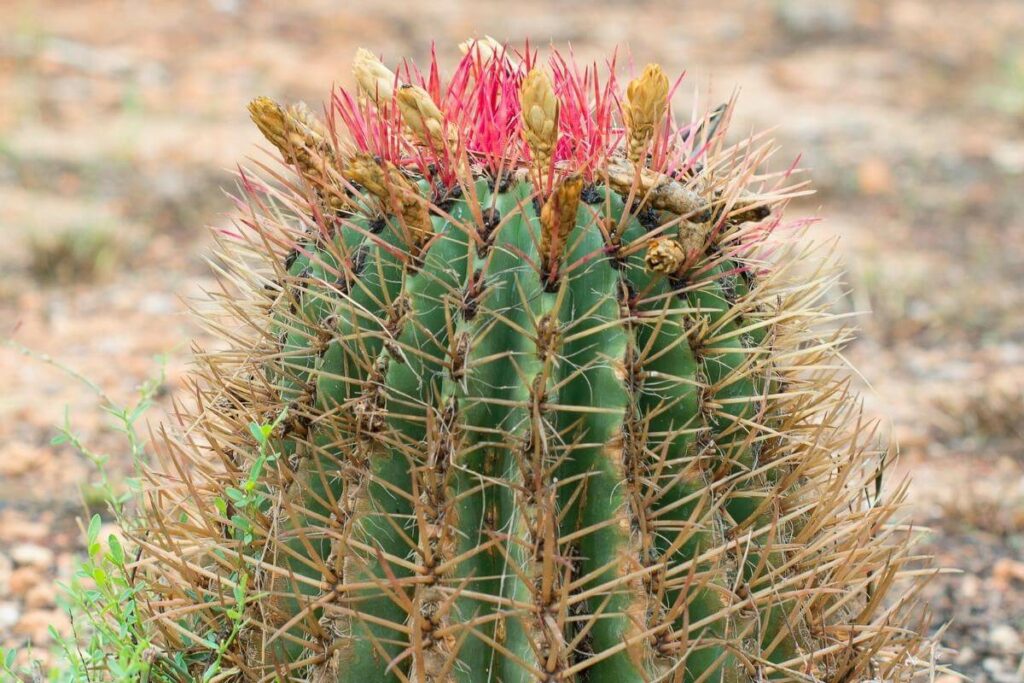Whether you’re a novice gardener or a seasoned one, cacti make excellent landscaping plants since they’re easy to care for and can thrive almost everywhere.
Cacti also come in a range of distinct sizes, forms, and colors and stunning blossoms and intriguing fruits, making them a fascinating plant to not only grow but also investigate and learn about.
These plants are naturally found in very dry areas. Therefore, watering a cactus should not be done regularly; instead, examine the plant’s condition and the dryness of the potting mix to determine whether to water it. The frequency with which cactus plants should be watered is affected by factors such as cactus size, humidity, pot size, season, and temperature.
How Often Do You Need to Water the Outdoor Cactus?

Cactus plants really store moisture in their plant cells in order to survive in extremely dry, drought-like circumstances.
However, having the knowledge on how frequently you should water your cactus is crucial.
They are quite resistant to water deprivation; however certain signals in the leaves, stems, or pads suggest that the plant might be lacking moisture.
For instance, the plant will start to discolor and wither.
Recognizing these indications, together with some knowledge of your plant’s native region and environment, can help you determine the ideal time to water your cactus plants.
When the inactive season (typically winter) is due, you should water once about every three to four weeks.
You should note that you don’t have to wait until you feel the Plant is dry. With everyday monitoring of your plants, you’ll get adapted to the routine.
The best time for you to water your cactus is in the early mornings. This will give the cacti ample time for the water to reach the roots and ensure its hydrated so as to survive throughout the heat in the afternoon.
This routine will also prevent the Plant from sunburns and also plant diseases.
Key Takeaway: You need to monitor a plant’s condition and the ground’s aridness to know when to water. Use a moisture probe or your data to determine the soil moisture levels.
How to Water Outdoor Cacti?
Cacti should only be watered when the soil base in the container is at a minimum of 90% dry.
Soil probes or moisture meters are the most effective methods to determine the relative moisture content present in the soil.
The best watering method for cactus plants is to saturate the soil completely using rainwater or distilled water and stop the watering process when water starts to disperse from the drainage holes in the potting vessel.
There are quite a few methods that you can use to water your cactus plants including:
- The best way isdeep watering. It is a method where during each watering, the soil is thoroughly soaked until you see water draining out of the holes that allow drainage.
- You also can drip water slowly around the roots using a hosepipe slowly for a few hours.
- Placing the container on a small bowl of water is another method that you can use. This allows the Plant to take in moisture through the roots. Once the soil is saturated, you can remove the Plant from the saucer.
5 Factors That Affect Watering of Cactus

It would help if you also thought about the following factors that affect the watering needs of a cactus plant.
1. Exposure to Light
Cactus plants tend to thrive when located in areas that receive sufficient light. However, plants will begin to show signs of stress such as etiolation and stunted growth with insufficient exposure to light.
2. Potting Container Size
The potting vessel you use to plant your cactus determines if you water the plants more or less often.
At the end of the day, shallow containers evaporate water quicker than wider ones.
Therefore, cacti in small containers need frequent watering than those planted in bigger pots.
Decision To Make: Some vessels are less porous than others; it’s upon you to choose the right potting vessel for your container.
3. Soil Type
This decides how much water the plant needs.
Soil is a crucial aspect of the growth of the cactus since it determines if it retains water or drains it.
Occasionally overwatering is not much of an issue if the soil is porous enough, as excess will easily drain away.
Heavy and compact soil is something that you should try to avoid if you want a thriving plant.
This type of soil is not well-draining and often leads to soggy conditions.
4. Size of the Plant
Since the growth rate of younger cacti is high, they will need more water.
This means that they need to be watered more frequently compared to the older cacti.
The larger cactus has a small surface area to volume ratio, thus, decreasing evaporation of water from the surface of the plant.
However, the cacti need still to be watered.
5. What Time of the Year
Seasons of the year greatly affect how cactus grow.
How you water your cacti during these seasons also determines if they thrive or not. As the weather changes, how you water them should also change.
Common Mistakes When Watering Outdoor Cacti

Overwatering and under watering are common issues encountered by most people.
Both are quite detrimental to their health.
Knowing how to water the cactus in the right manner helps your plant to grow in firm conditions; this can be achieved by watching out for signs of poor watering practices.
| Signs of an Underwatered Cactus Plant |
|---|
| The cacti will turn pale on their leaves and stem |
| The plants begin to wither |
| The weight of the pot becomes lighter |
| There will be a dropping of leaves as the plant starts to wilt |
| The Plant will be deprived of moisture and become dry in appearance and to the touch |
Cactus roots rot quickly if neglected.
Once they rot, they no longer absorb nutrients and water so as to transport them to the rest of the plant parts.
This leads to a change in color and wilting.
For the cacti that don’t make it, overwatering is probably the leading cause of death.
| Signs of Overwatered Cactus Plant |
|---|
| The cactus appears to rot |
| The stem and leaves turn brown or black |
| Plants begin to appear plump |
Less-known Fact: Unlike underwatering, the effects of overwatering may be irreversible.
Final Thoughts
When you think about cactus, you generally think arid, desert plant.
This is not always the case, as cacti range from diverse environments; some even grow in tropical rainforests.
It is critical to understand your cactus’ water requirements. Cacti are succulents that have been developed to store water in their roots and stems to assist them in surviving droughts.
While each cactus has varied water requirements, there are a few tactics you can employ to ensure that you always know when to water your cactus.
Proper watering of cactus is vital as it helps promote their growth, production of cells, blossoming, and fruiting.
Although watering is not much of a hectic process, you need to make extra efforts to study your cacti to know their water needs.
Background information about their origin and living conditions is important so that you can try replicating these conditions.


